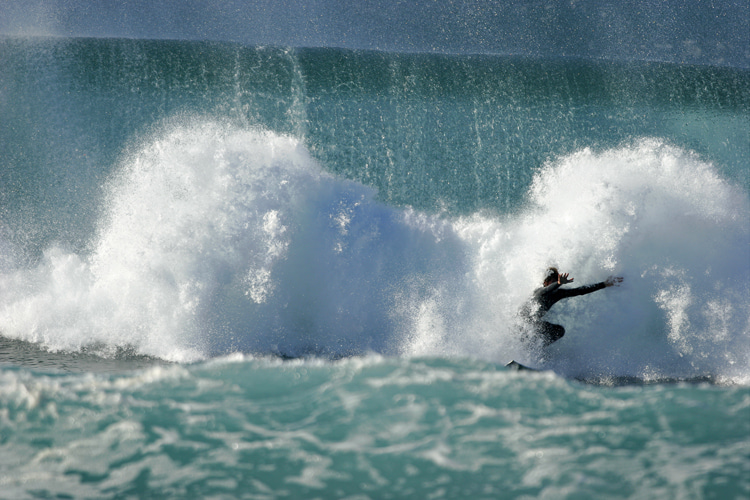For every perfect wave breaking on an idyllic surf destination, there's a bad wave haunting our home break. Here's what determines a mediocre wave for surfing.
In surfing, the ideal wave breaks evenly from one side to another, allowing the surfer to perform maneuvers and tricks on the unbroken, open face.
In a dream scenario, there's a six-foot blue barreling cylinder peeling perfectly across a sandbar for one or two miles.
It's a rare thing, but it happens, for instance, in Chicama, Peru, home of the world's longest left-hand wave.
However, we all have to deal with the harsh menu served by reality.
And the reality is often less spectacular than the social media feed, where carefully selected video clips only showcase the outliers, i.e., the abnormally heavenly waves breaking in select venues.
So, what are the characteristics of a poor wave? Where do you draw the line between a rideable surfing wave and a no-go decision?
Here are seven variables that influence the option to stay dry and not paddle out.
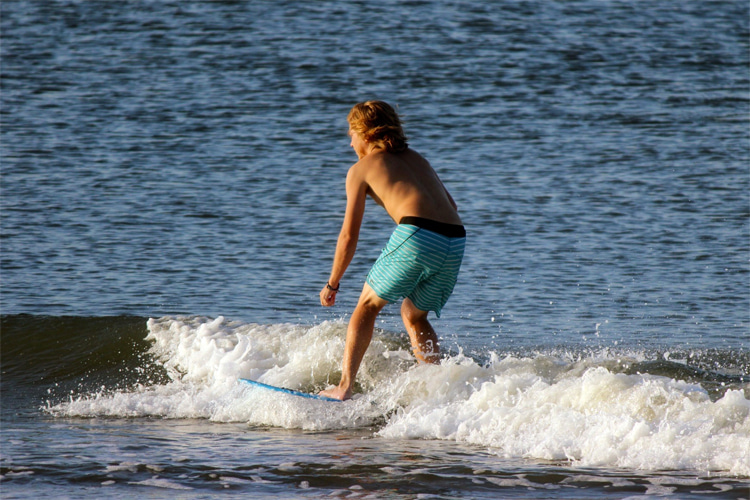
1. A Very Small Wave
We can learn a lot from riding small waves.
Multiple-time world bodyboarding and bodysurfing champion Mike Stewart once stated that "it is harder to surf a small wave than a big wave."
And that's absolutely true.
Why? Because you really need to adjust your body and make subtle adjustments to your stance to keep up and ride the small wave.
However, a very small wave - for instance, a one-footer - could be just impossible to surf.
2. A Windswell Wave
Short-period waves can be problematic.
They are generally created by local winds blowing close to the beach. These windswell waves lack energy and are often choppy and unstable.
Although they are many times the only option available for surfers in nearly or totally closed seas (Baltic Sea, Black Sea, Mediterranean Sea, Red Sea, etc.) or large lake areas (Great Lakes, Lake Winnipeg, etc.), these waves are very difficult to surf.
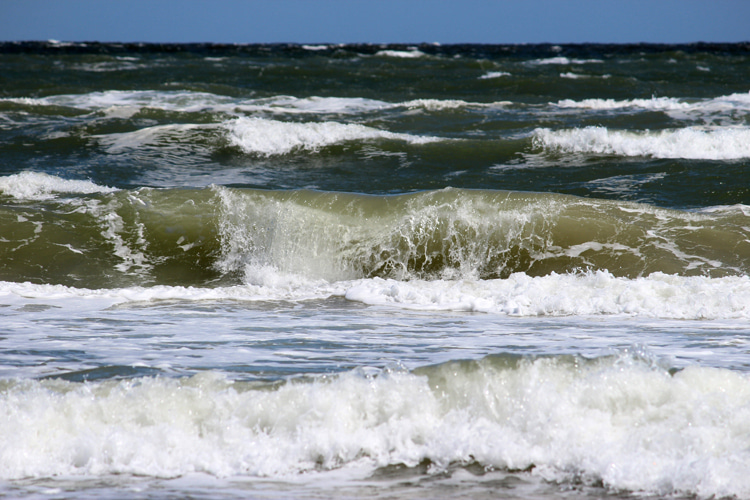
3. An Uneven Wave Breaking Randomly
Ocean floors play a critical role in the creation of good and bad waves for surfing.
Sometimes, everything is perfect - the wind is offshore, and a 15-plus-second swell is approaching the beach at the right angle.
However, if the sandbars are messed up, there could be waves breaking randomly, here and there, with no regular formation whatsoever.
Consequently, it makes positioning and choosing good or even fair waves difficult to pick.
4. A Fat and Mushy Slow-Breaking Wave
The fat and mushy waves are a recurring issue among surfers.
Although they can sometimes have an interesting height, these waves are almost never fast, steep, or hollow enough to be ridden.
They can be a consequence of high tides or very gradual bottom contours, and they never quite break and transform into whitewater.
Technically named spilling waves, they are often a surfer's nightmare.
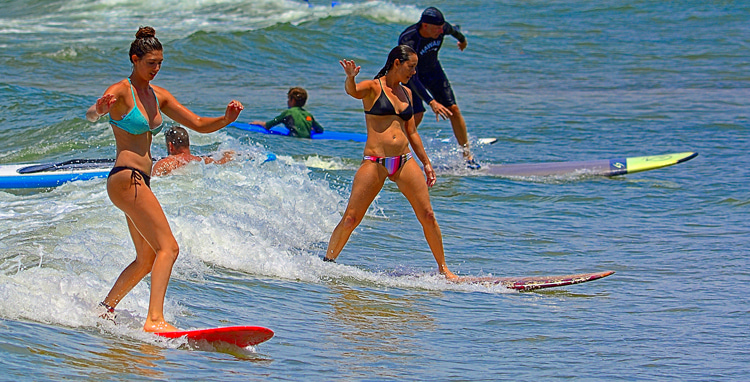
5. A Broken Whitewater Roller
Whitewater waves can be fun for learning to surf, but they're not technically rideable waves.
The problem with these foamy rollers is that they're highly turbulent and unstable and do not provide a clean wall on which a surfer can draw top-to-bottom lines.
The whitewater generated by a crumbling big wave is also unrideable.
6. A Closeout Wave
Closeout waves are terrible for several reasons.
They do not allow surfers to take off on a stable liquid platform - they're steep and hollow.
They're unrideable, too. In the best-case scenario, you may be able to take off and point the surfboard toward the shoreline.
If you don't make the drop, you'll go over the falls and wipe out hard on the flats before being hammered by the shutting wall of water.
The consequences are normally broken boards and broken bones.
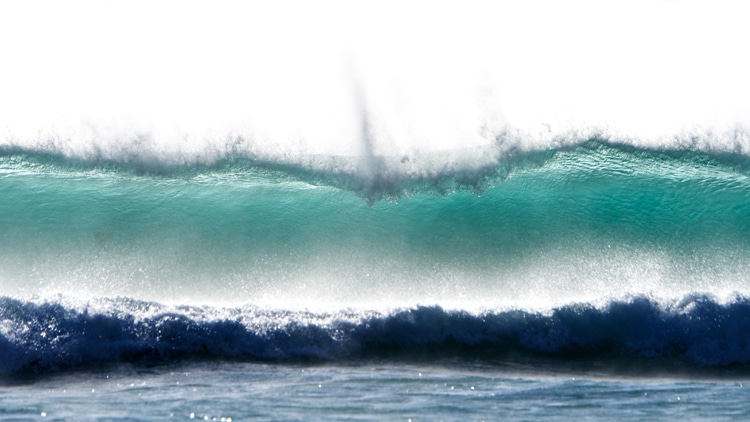
7. A Tsunami Wave
For those who have never surfed, it might look like the ultimate surfing wave. But it's not.
A tsunami has all the characteristics of a non-rideable wave.
With a very long wavelength and relatively small wave height, tsunamis travel fast in shallow water before reaching the coastline, and wave shoaling occurs.
The massive harbor wave's timing is impossible for a surfer to match.
Moreover, the moving water will enter terra firma and level buildings inland.
